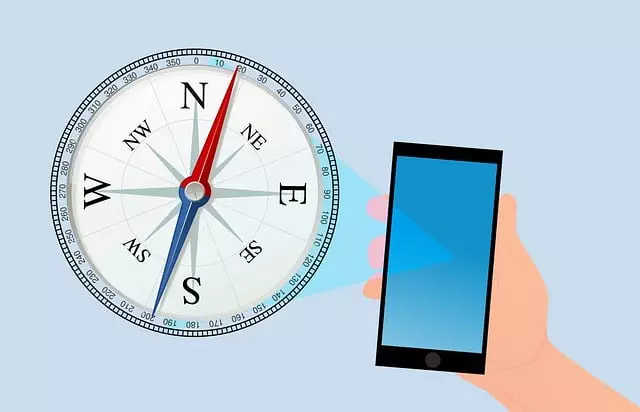Touchscreen GPS technology has revolutionized mobile navigation in Toledo. Choosing between DIY or professional installation depends on technical expertise and desired customization. Professionals offer flawless integration, tailored settings, and support, ideal for convenience. For DIY, gather essential components like a compatible automotive GPS and mounting hardware. Mounting options, such as adjustable brackets or suction cups, ensure optimal visibility without obstructing the driver's view. Thorough testing and calibration after installation are crucial for accurate location data and navigation.
“Unleash the power of location-based services with a Touchscreen GPS installation in your vehicle. This comprehensive guide explores the world of modern navigation systems, highlighting the benefits of professional setup for seamless integration and optimal performance. For those eager to DIY, we offer a detailed step-by-step process.
Discover the ideal GPS for Toledo, covering preparation, tools, mounting, and testing. Whether opting for professional installation or tackling it yourself, this guide ensures your new touchscreen GPS becomes a reliable companion on every journey.”
- Understanding Touchscreen GPS Technology
- Benefits of a Professional Installation
- DIY Installation: A Step-by-Step Guide
- Choosing the Right GPS Navigation System for Toledo
- Preparation and Tools Required
- Mounting Options for Optimal Visibility
- Testing and Calibration Procedures
Understanding Touchscreen GPS Technology
Touchscreen GPS technology has revolutionized the way we navigate and access information on the go. At its core, a touchscreen GPS system integrates a high-resolution display with advanced navigation software, allowing users to interact with maps, directions, and real-time data through simple touch gestures. This intuitive interface enhances driver experience by providing clear visuals and quick access to various functions, from point-to-point routing to traffic updates.
When considering GPS navigation system installation in Toledo or DIY options for your vehicle, understanding the capabilities of this technology is crucial. Professional GPS installation ensures optimal placement of the touchscreen unit, seamless integration with your car’s electrical system, and often includes additional features like Bluetooth connectivity, voice commands, and weather alerts. Whether opting for a professional setup or attempting a DIY approach, the goal should be to maximize functionality and reliability for safe and efficient driving.
Benefits of a Professional Installation
A professional GPS navigation system installation offers numerous advantages over DIY approaches. Experts in this field have the specialized knowledge and tools required to ensure a seamless fit, maximizing both functionality and aesthetics within your vehicle. They can navigate complex wiring and integration processes, often involving various components like sensors, cameras, and existing infotainment systems, ensuring optimal performance.
Professional installers also provide peace of mind with their meticulous attention to detail and adherence to safety standards. This is particularly important for GPS devices that rely on accurate positioning and signal reception for reliable navigation. By leaving this task to professionals, you guarantee a high-quality installation, avoiding potential issues related to poor placement or incorrect wiring that could impact your GPS’s effectiveness.
DIY Installation: A Step-by-Step Guide
DIY GPS Navigation System Installation: A Simple Guide for Toledo Residents
For those in Toledo looking to install a GPS navigation system, taking on the task yourself can be both rewarding and cost-effective. Here’s a step-by-step guide tailored specifically for your vehicle. Before starting, gather all necessary tools: a GPS device compatible with your vehicle’s dashboard, mounting kit, power cable, and a suction cup or double-sided tape for secure attachment (depending on the model). Begin by powering off the engine and disconnecting the battery to avoid any short circuits. Next, locate the ideal spot on your dashboard—usually a flat, clean surface—and prepare it according to the manufacturer’s instructions.
Insert the GPS device into its designated slot or mount it securely using the provided hardware. Connect the power cable to the device and to a power source within your vehicle. Ensure all cables are tucked away neatly for a clean, safe installation. Once mounted, test the GPS functionality and adjust settings as needed. Remember, proper positioning and wiring are crucial for optimal performance. Compare this DIY approach to professional gps installation in Toledo; while it offers flexibility and savings, professional services guarantee precision and warranty support.
Choosing the Right GPS Navigation System for Toledo
When it comes to choosing the right GPS navigation system for Toledo, there are a few key factors to consider. First and foremost, determine your specific needs. Do you require real-time traffic updates? Are you looking for a system with advanced mapping features or voice guidance? Understanding your requirements will help guide your decision between a DIY GPS installation or opting for professional gps installation services.
For those inclined towards hands-on projects, a DIY approach offers cost savings and customization options. However, it demands careful selection of a compatible system with your vehicle’s make and model, along with the necessary technical expertise to install it properly. Conversely, professional gps installation ensures seamless integration, tailored settings, and expert support, making it ideal for those prioritizing convenience and hassle-free navigation without the learning curve.
Preparation and Tools Required
Before installing a GPS navigation system in your Toledo vehicle, ensure you have all the necessary tools and preparation to make the process smooth and efficient. This includes gathering essential components such as a compatible GPS device, mounting hardware, and power cables. It’s crucial to choose a high-quality GPS designed for automotive use, ensuring it integrates seamlessly with your car’s electrical system. For a DIY installation, consider investing in a user-friendly model that offers clear instructions and straightforward connectivity options like USB or Bluetooth.
Professional GPS installation services are also available, providing expert knowledge and precision. This option is ideal if you prefer not to handle the technical aspects yourself or want a guaranteed flawless fit. The installer will assess your vehicle’s interior, select appropriate mounting locations, and connect the GPS to your car’s power and data systems, ensuring optimal performance and a safe driving experience.
Mounting Options for Optimal Visibility
When installing a GPS navigation system in your Toledo vehicle, mounting options play a crucial role in ensuring optimal visibility and usability. The goal is to position the device where it’s easily visible for both driver and passengers without obstructing important instruments or line of sight. For DIY installations, consider using universal mount kits that fit most dashboard spaces. These kits often include adjustable brackets and suction cups, allowing you to customize the placement according to your vehicle’s specific needs.
For a more professional setup, many companies offer tailored GPS navigation system installation services. Experts in this field can select the ideal mounting location based on factors like light exposure, line of sight, and accessibility for updates or adjustments over time. Whether you opt for a DIY approach or professional installation, the right mounting solution ensures that your Toledo’s GPS remains a reliable tool for navigation and safety.
Testing and Calibration Procedures
After installing a GPS navigation system in your Toledo vehicle, thorough testing and calibration are essential steps to ensure optimal performance. Before hitting the road, it’s crucial to conduct a series of checks to verify the system’s functionality. Start by powering on the device and confirming that all components, including the touchscreen display, buttons, and sensors, respond as expected. Verify that the GPS signal is acquired, displayed, and accurately tracking your location.
Next, navigate the system through various menus, inputs, and settings to ensure smooth operation. Test different functions like map navigation, point-of-interest searches, voice commands (if available), and any additional features unique to your device. Additionally, perform a calibration process as per the manufacturer’s instructions to fine-tune the GPS receiver for precise location data. This step ensures accurate mapping and navigation, enhancing your overall driving experience.


